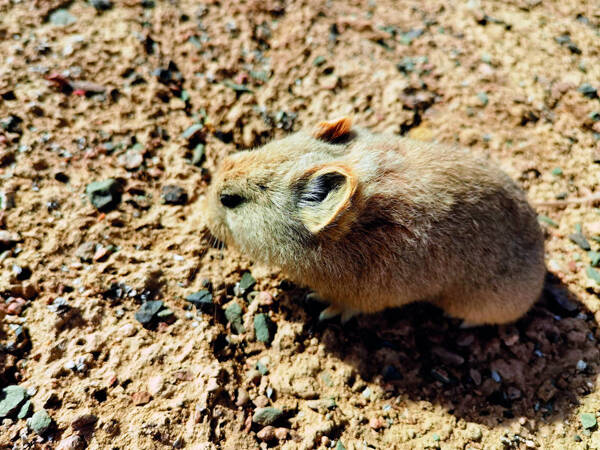Ochotona himalayana
IUCN
LCBasic Information
Scientific classification
- name:Ochotona himalayana
- Scientific Name:Ochotona himalayana
- Outline:Lagoiformes
- Family:Lagomorpha Ochotonidae Ochotona
Vital signs
- length:140-180mm
- Weight:
- lifetime:
Feature
There are beige patches behind the ears and less ear hair.
Distribution and Habitat
It is endemic to China. It is only distributed in the Himalayan region in southern Tibet.
The Himalayan pika is distributed in Tibet and other places, mostly in the alpine coniferous forest belt. The type locality of this species is Nyalam County in the Boqu River Valley of Tibet.
Appearance
The individual is medium-sized. The body length is 140-180mm. The ear height is 25-30mm. The color is relatively bright. The back of the body is tan or gray-brown. There are yellow-brown or tan patches on the neck and shoulders. There are beige patches behind the ears, and the ear hair is sparse. On the skull, there is no oval foramen in the frontal bone, and the incisor foramen and palatine foramen are merged into one large hole. Compared with the co-distributed gray scorpion rabbit (Ochotona roylei) and big-eared scorpion rabbit (Ochotona macrotis), the color of the Himalayan scorpion rabbit has a brown hue; the big-eared scorpion rabbit is sometimes yellow-white with black patches, and the gray scorpion rabbit is generally gray-black. Both the gray scorpion rabbit and the big-eared scorpion rabbit have oval foramen in the frontal bone.
Details
The Himalayan pika belongs to the subgenus <Conothoa>. The species was published by Chinese scientist Feng Zuojian in 1973, but its taxonomic status is controversial. At present, most studies believe that this species is a synonym of the gray pika (<Ochotona raylei>). Liu Shaoying et al. (2016) supported that it belongs to the gray pika through phylogenetic research of Cyt-<b> genes; but more in-depth research results (article to be published) show that it is still an independent species.
It has been included in the "List of Terrestrial Wildlife with Important Economic and Scientific Research Value under State Protection" issued by the State Forestry Administration of China on August 1, 2000.










